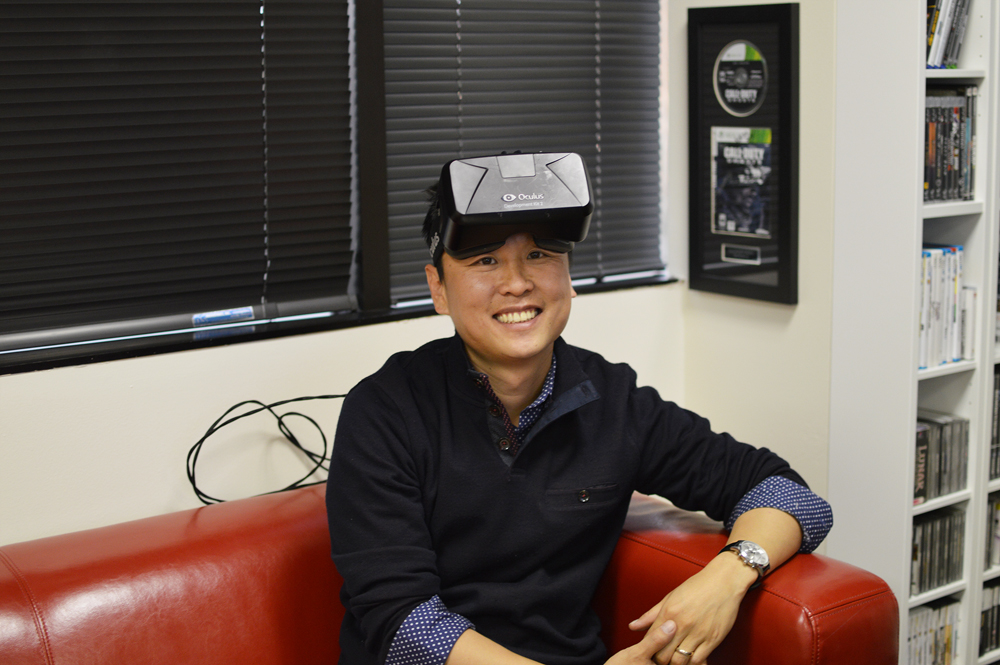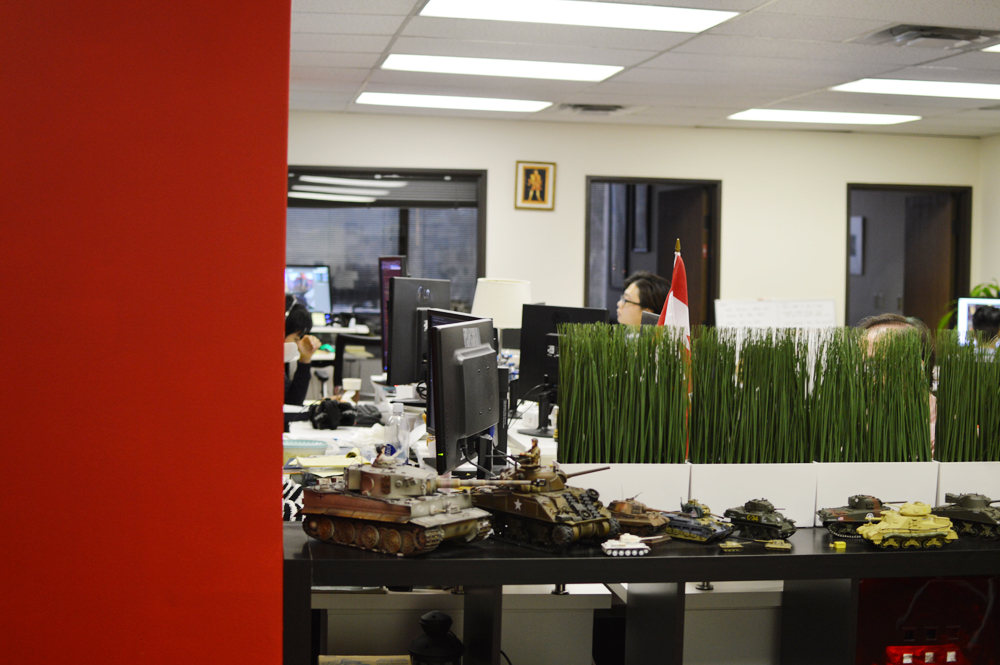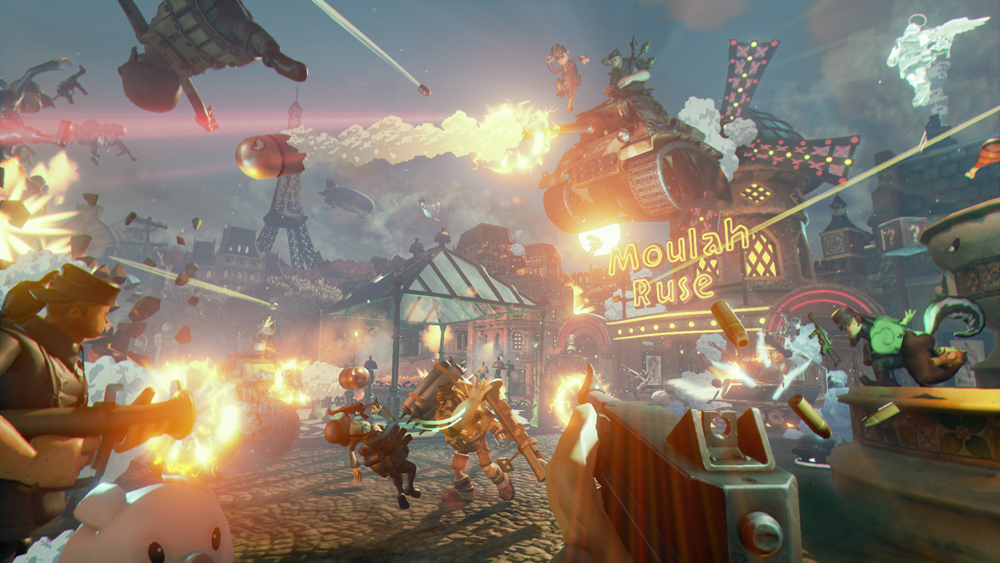- California Assembly OKs highest minimum wage in nation
- S. Korea unveils first graphic cigarette warnings
- US joins with South Korea, Japan in bid to deter North Korea
- LPGA golfer Chun In-gee finally back in action
- S. Korea won’t be top seed in final World Cup qualification round
- US men’s soccer misses 2nd straight Olympics
- US back on track in qualifying with 4-0 win over Guatemala
- High-intensity workout injuries spawn cottage industry
- CDC expands range of Zika mosquitoes into parts of Northeast
- Who knew? ‘The Walking Dead’ is helping families connect
Reload Studios’ Taehoon Oh: From Call of Duty to Virtual Reality
By Tae Hong
The first time Taehoon Oh tried on a virtual reality headset, he was a lead artist with Infinity Ward, its prolific 10-year veteran weaponsmaker for “Call of Duty.”
A coworker had brought in the blocky device, calling it the latest gaming technology. It’s a 3D, 360-degree view. Tilt your head up, there’s the sky. Try spinning (careful, you’ll get dizzy.) Turn your head backward. Walk. It’s all there, completely immersive.
“When I put it on for the first time, it was fascinating,” Oh said. “The more you look around, the more you feel like you’re in a different world. I said, wow. This is huge. Just as we play games on our TVs or on our tablets, this is going to reinvent gaming culture.”
Five other CoD artists saw the potential, too. Oh himself had had a great run, having designed the majority of weapons in the game, an even 100 guns. It was time to move on.
So came Reload Studios, founded by Oh and fellow video game vet James Chung. With its team of former CoD and Disney artists, Reload has placed itself in the forefront of VR gaming, positioned to provide some of the first content for the emerging, not-yet widely available platform.
The company unveiled the first real look at its project, World War Toons, in March. The first-person, multiplayer shooter is a cartoonish “laugh-out-loud” combat game currently in its Alpha stage. An official release date is yet to come.
Whether or not the game (and VR as a mass platform) will succeed is still up in the air.
But Oh is hopeful. He’s seen what it takes to take a new company and help it grow — back in the early 2000s, right out of learning computer design in San Francisco, he joined a group of 20-some employees at Infinity Ward.
“Call of Duty” was nary a household name then; last year, it was crowned Best Franchise Ever by Guinness Book of World Records.
Reload, formed in July last year, has already moved out of its first two homes — one Chung’s garage, and one a small office space without air conditioning located right next to its current Tarzana home.
Executive Producer Pete Blumel, who worked with Oh for eight years at Infinity Ward before joining the Reload team, is finding fun in looking toward the future of VR technology.
“Everything we’re seeing is literally the first baby steps,” he said. “There’s a lot of implications with VR. It can work in so many ways, so many amazing ways. For us, it’s, what is the best way we can make our footprint in virtual reality?”
The decision to have the studio’s first release be a multiplayer shooter came from the team’s extensive experience making these types of games, Blumel said. It’s about overcoming the hurdles of making a game for VR and creating presence as gamemakers.
“This is a great project for us to dig in our heels and figure everything out. After that, we’ll go forward and have more know-how than a lot of others who are just starting,” Blumel said.
“[Infinity Ward] was a start-up company like this one,” Oh agreed. “When VR becomes mass-produced, the content needs to follow with it. We’re diving into making VR games before anyone else.”
Before working in the game industry, Oh had studied engineering at Hongik University in Korea.
All the while, he loved animation and video game design. Mid-1990s Korean universities lacked the kinds of art programs he was looking for. He headed stateside and enrolled in Academy of Art University.
As a child growing up in Korea, what caught his attention was, bizarrely enough, a nightly animation of a clock hitting 9 p.m. on network television. It was a custom of the time and is no longer practiced, but to Oh it was a point of fascination.
“It’s strange, but I wanted to be the person making that animation,” he said.
Years later, he would see his work, his guns, printed dozens of feet tall and plastered onto CoD billboards and advertisements across the country. The guns are omnipresent — it is a shooter game, after all — and, de facto, so was Oh.
Virtual reality is his new challenge. It’s a good thing he loves challenges.
“There’s a saying I like,” he said, perhaps a reflection of his view on VR and its imminent place in the game industry. “Tomorrow will be better than today, because today is better than yesterday.”












![블랙핑크 로제(좌)와 제니(우) [로제 인스타그램·OA엔터테인먼트 제공. 재판매 및 DB 금지]](http://www.koreatimesus.com/wp-content/uploads/2025/04/AEN20250423001000315_02_i_P4-copy-199x223.jpg)





